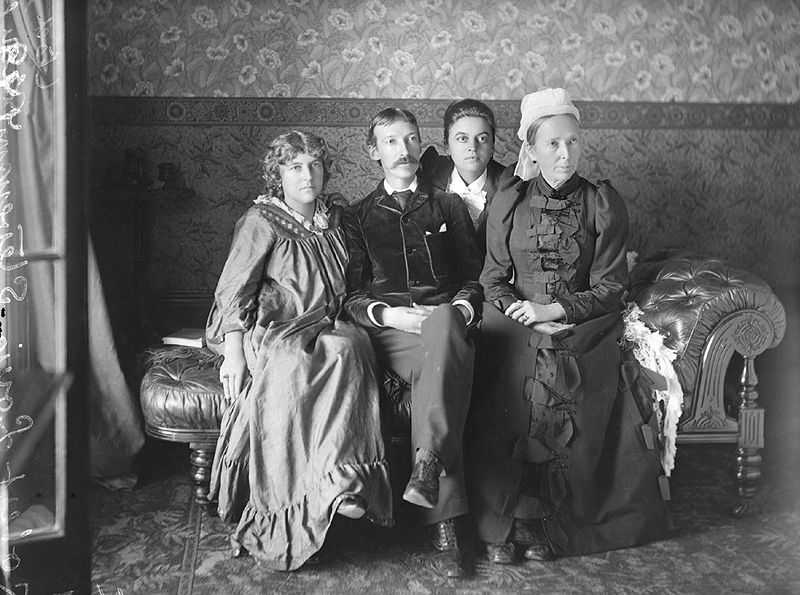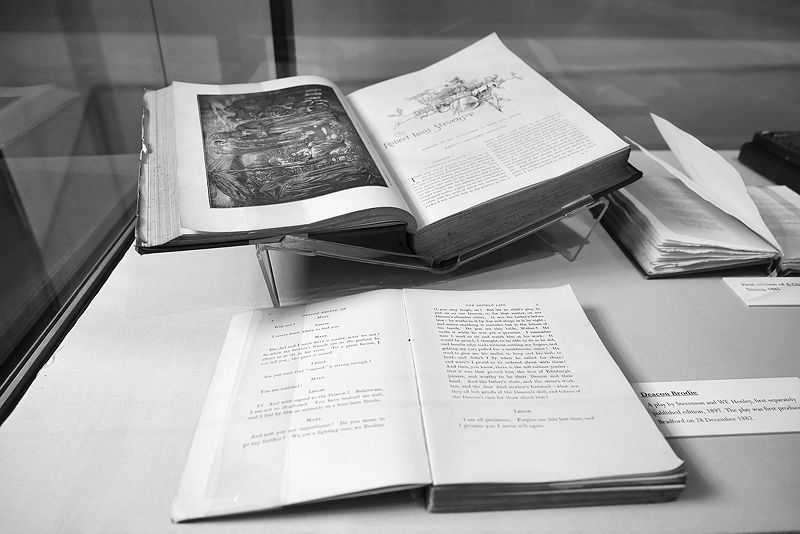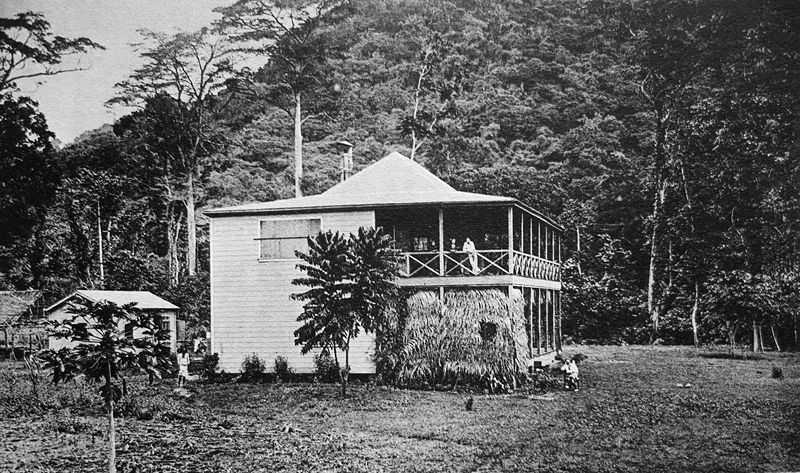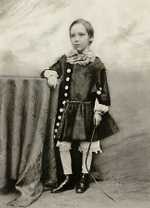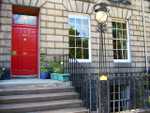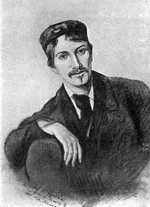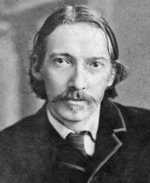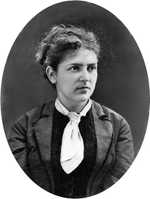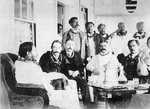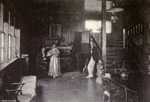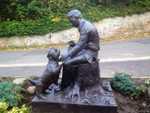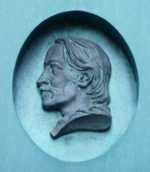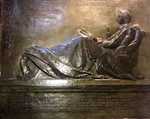1. Early Years and Education
Robert Louis Stevenson was born in Edinburgh, Scotland, on 13 November 1850.
He was named Robert Lewis Balfour Stevenson, but around the age of 18 he changed “Lewis” to “Louis”. He disposed of “Balfour” a few years later.
A famous father
Stevenson’s parents were Thomas Stevenson, a prominent lighthouse engineer, and his wife, Margaret Isabella.
Thomas Stevenson designed more than thirty lighthouses in and around Scotland. In addition, he designed an enclosure called the Stevenson screen, which is a standard part of weather stations that protects meteorological instruments from the elements.
His lighthouse designs were groundbreaking, and marked a new era in this field of design.
Stevenson Snr was also a co-founder of the Scottish Meteorological Society.
Early life
The young Stevenson was his parents’ only child. But he had 54 cousins, which made his household somewhat unique. Poems that Stevenson later wrote of his childhood had memories ranging from an idyllic era on the one hand to a time of miserable ill-health on the other.
Stevenson’s childhood nurse, Alison Cunningham, was a pivotal figure in the Stevenson household. She started working for the family in 1852 when she was thirty-five years old, twelve years his mother’s senior.
The intensely religious Cunningham was extremely devoted to the family for whom she worked for around two decades; she even turned down a few suitors to keep working for them.
Stevenson viewed her as a companion rather than a nanny, and he later referred to her as “my first wife”. Later in his life he dedicated A Child’s Garden of Verses to her.
At the age of three the young Stevenson suffered a devastating croup attack, and for a while his parents feared for his life.
Stevenson’s parents were both hypochondriacs. They came from families with high infant mortality rates, having between them twelve deceased siblings. The delicate young Stevenson spent a large portion of his early years bedridden. It is unclear whether this was really necessary.
According to Stevenson’s mother’s diary, he had by the age of nine suffered from bronchitis, gastric fever, whooping cough, chicken pox and scarlet fever.
In addition he had a persistent cough, possibly due to lung damage caused by the croup, and his parents suspected that he was possibly asthmatic. In 1857 the family moved from their damp Inverleith Terrace house to a sunnier home on Heriot Row. Despite this Stevenson still suffered severe illness during winters until the age of 11. His health remained problematic in his adult life, and he was very thin throughout his life.
Education
Just before he turned seven, Stevenson started attending Mr Henderson's School in Edinburgh. Due to his poor health he could only attend school for a few weeks though, and he had to be schooled by private tutors.
Stevenson loved writing stories as a child, and his father was proud of the young boy’s budding talent as a storyteller.
He returned to Mr Henderson's School just over two years after he had left. From there he started attending an independent school for boys, Edinburgh Academy, in October 1861; which he attended intermittently for about fifteen months.
In mid-1862 Stevenson and his family visited Homburg in Germany to search for a cure for his health problems. After this Stevenson spent a term at an English boarding school in Middlesex. During this period his health improved, and as a result he started attending Robert Thomson’s private school in Edinburgh, where he completed his secondary education.
When he was 16 years old, Stevenson’s father paid for the publication of his first book The Pentland Rising: A Page of History. Stevenson started studying engineering at the University of Edinburgh in 1867, which he did not enjoy. He consequently avoided a large portion of his lectures.
He devoted a lot of time fostering his friendships at this stage, and he belonged to an exclusive debating club called the Speculative Society.
Stevenson spent a lot of time with his cousin Robert Alan Mowbray “Bob” Stevenson, an artist. He made friends with Charles Baxter, his future financial agent, and Professor Fleeming Jenkin, with whom he shared a love for drama.
Stevenson wrote Jenkin’s biography at a later stage.
2. Early Travels and Decision to Become a Writer
During university holidays Stevenson travelled with his father to inspect the family’s engineering works.
Early travels
Stevenson did not share his father’s passion for engineering, but he enjoyed the travels as it inspired his writing. In 1868 they travelled to the coastal resort town of Anstruther, and to the burgh of Wick in the north of Scotland.
The following year they visited the islands of Orkney and Shetland, followed by the island of Errald the next year.
Stevenson decides to become a writer
Stevenson’s father was not too disappointed when his son told him in early 1871 that he had decided to become a writer instead of following the family profession of engineering.
Stevenson Snr advised his son to read Law at Edinburgh University and to be called to the Scottish bar, which would provide him with some financial security to support his writing. During this time the young Stevenson started dressing more unconventionally. Thanks to a small allowance, visited cheap bars and bordellos.
The beginning of 1873 marked a long period of disagreement with his parents. The fallout was sparked by his father’s discovery of the constitution of the Liberty, Justice, Reverence club—to which Stevenson and his cousin Bob belonged—which started with "Disregard everything our parents have taught us”.
Stevenson’s parents were devastated by this.
When his father confronted him, he told his father that he was unable to accept the dogmas of the Church of Scotland, of which his parents were devoted members. In this time Stevenson wrote to his friend Baxter that he was now a “damned curse” to his parents, “(probably) the only two people who cared a damn about you in the world”.
Stevenson explained at a later stage that he was not an atheist though, and that he still respected Christianity because of its outlook on the world. About a year after this fallout, he made peace with his father.
Stevenson friends in literary circles
In late 1873 while visiting a cousin in England, Stevenson met Sidney Colvin and Frances Jane Sitwell. Stevenson had a relationship with Sitwell, but she married Colvin in 1901.
Colvin published Stevenson's first paid piece, an essay called ‘Roads’ in The Portfolio, a British art magazine. He became Stevenson’s literary agent, and the first publisher of his letters after his death.
In that time, Stevenson started moving around in London's literary circles. He got to know writers such as Andrew Lang and Edmund Gosse.
Leslie Stephen, the editor of The Cornhill Magazine introduced Stevenson to William Ernest Henley, who became a good friend of his for a while. It is believed that Stevenson in later years modeled his character Long John Silver in his book Treasure Island on Henley.
Further travels and studies
In November 1873 Stevenson, who was battling with his health at the time, travelled to Menton on the French Riviera to get better. He returned to Scotland in 1874 to continue his studies, and he qualified for the Scottish bar in July the following year.
Stevenson never went on to practice law, but his law studies influenced his later books. He focussed on his travels and writing instead.
He visited France often and for extended periods, where he was a member of artists’ colonies. Stevenson also undertook a canoe voyage in Belgium and France with Sir Walter Simpson, who was a friend from his debating club at the University of Edinburgh.
Simpson, a writer himself, often travelled with him. Stevenson used the canoe voyage as the inspiration for his travel book An Inland Voyage.
3. Stevenson’s Marriage and Further Travels
During his canoe voyage in Europe, Stevenson met the American Fanny Van de Grift Osbourne at the commune of Grez-sur-Loing in the Seine-et-Marne department in north-central France.
Stevenson meets Fanny Van de Grift Osbourne
Upset by her husband’s philandering, Osbourne had left America for France with her daughter, Isobel, to study art.
After Stevenson met Osbourne in 1876 he returned to Britain, where he wrote the essay ‘On Falling in Love’ for the Cornhill Magazine. He could not forget her, so he returned to France early in 1877, where they were reunited and became lovers.
Stevenson then spent a large amount of time with Osbourne and her children, but in the middle of the following year she returned to California. Stevenson's friends and family disapproved of the relationship, and Osbourne returned to her husband.
Stevenson embarked on a walking trip of the Cévennes mountains in south-central France in 1878, which inspired his Travels with a Donkey in the Cévennes. He travelled to California in August 1879 to join Osbourne in California. The journey became his inspiration for The Amateur Emigrant.
This trip damaged Stevenson’s health though. He was near death when he arrived in Monterey, California, where he was nursed back to health by local ranchers. He then regained his strength while staying in the French Hotel.
At the end of 1879 he went to San Francisco, where he tried to eke out a living with his writing. He became very ill again, and Osbourne—now divorced—joined him and started nursing him. Stevenson made a radical recovery. His father, who got to learn about his health problems and his financial troubles, sent him money.
Stevenson marries Osbourne
Stevenson married Osbourne in May 1880.
Accompanied by his stepson Lloyd, Stevenson honeymooned with his new wife at an abandoned mining camp on Mount Saint Helena in California for two months. He wrote The Silverado Squatters, a travel memoir about his honeymoon trip.
In August 1880 Stevenson travelled with his wife and stepson from New York to Liverpool in England, where he met his parents and his friend and literary advisor, Colvin.
Stevenson’s charming wife further restored the relationship between him and his father, and she became part of the family.
Unlike Stevenson’s family, many of his friends never accepted his wife. They disliked the fact that she was a decade older than him. They further disapproved of her mannerisms and the influence she had on her husband.
She also, in an effort to protect her husband’s health, kept his friends away from him when he was sick. This did not sit well with them. In later years literary critics and biographers also expressed hostility towards her, because they found that she controlled Stevenson’s life and writing too much.
Stevenson writes his best-known works
From 1880 to 1887 Stevenson spent time looking for a place to live that would be conducive to his health; spending summers in various places in Scotland and England, and living in France in wintertime.
During this time he wrote his most famous works: The Strange Case of Dr Jekyll and Mr Hyde, Treasure Island, A Child’s Garden of Verses and Kidnapped.
Stevenson dies
When his father died in 1887, Stevenson decided to move to Colorado with his family and his mother.
Along the way they decided to spend time at a cure cottage in the Adirondack Mountains in New York. During this time he started writing The Master of Ballantrae, and he wrote his essay ‘Pulvis et Umbra’.
4. Voyage to the Pacific
In 1880, the year in which he got married, Stevenson met co-editor of the Overland Monthly, Charles Warren Stoddard, in San Francisco.
Back then Stoddard had tried to convince Stevenson to travel to the South Pacific.
It was during the time Stevenson spent with his family in the Adirondack Mountains that he started considering a cruise to the southern Pacific Ocean for the following summer.
Departure
Stevenson set sail from San Francisco with his family in June 1888, chartering the yacht Casco. During the voyage his health improved due to the sea air and the excitement of the adventure.
The family stayed on the Hawaiian Islands for a while, where Stevenson befriended King Kalākaua and the king’s niece, Princess Victoria Kaʻiulani, whose father was a Scottish financier from Edinburgh.
Stevenson also spent time at the Gilbert Islands, Tahiti, New Zealand and the Samoan Islands; during which time he completed The Master of Ballantrae and wrote his short story ‘The Bottle Imp’.
In addition he composed two ballads based on the legends of the islanders, and he wrote In the South Seas.
Gilbert Islands
In 1889 Stevenson set sail with his stepson Lloyd on Equator to the Gilbert Islands, visiting Butaritari and Abemama.
On Abermama they spent a few months with the chief Tem Binoka whom he described in In the South Seas, which was published after his death.
Third voyage among the South Sea Islands
Planning to write another book on his travels after In the South Seas, Stevenson departed from Sydney on the Janet Nicoll in April 1890 on his last voyage among the South Seas Islands.
Instead it was his wife who published her journal The Cruise of the Janet Nichol.
Stevenson and his stepson co-authored The Wrecker, and based the character of Tommy Hadden on fellow-passenger Jack Buckland’s stories of his life as an island trader.
5. Last Years & Legacy
Following two failed attempts to visit Scotland, the Stevensons settled on the Samoan island of Upolu, where he bought a piece of land in the village of Vaillima.
Life on Samoa
In Samoa, where Stevenson took the name Tusitala—Samoan for "Teller of Tales"—he became influential among the locals. He participated in local politics, and became an advisor to the Samoans.
He published A Footnote to History after numerous failed attempts to deal with the ineptitude of the European officials who ruled over the Samoans. Because of his writings in A Footnote to History, two officials were recalled and Stevenson was concerned that he would be deported as a result.
On Samoa he wrote The Ebb-Tide,The Beach of Falesa,Catriona— which was called David Balfour in the U.S., and the Vailima Letters. Stevenson had a lot of projects on the go during this period, causing him to feel overwhelmed and depressed. This impacted on his creativity.
Soon though he became inspired again and wrote Weir of Hermiston, which he believed to be his best work.
Death
On 3 December 1894, the 44-year-old Stevenson suddenly collapsed due to a stroke and died a few hours later. Just before he collapsed, he was straining to open a bottle of wine while talking to his wife. "What's that? Does my face look strange?" he suddenly asked her, and collapsed.
He died a few hours later. The Samoans guarded his body through the night, and carried him on their shoulders to bury him. As they dearly loved him, they translated his tombstone epigraph into a Samoan song of grief.
Stevenson’s mother, Margaret, who had lived and travelled with him and his family since her husband’s death in 1887, returned to live with her sister in Edinburgh. Stevenson’s family stayed on Samoa for a few months after his death. His widow then eventually settled in Santa Barbara.
Legacy
Stevenson was immortalised in many ways after his death in 1894.
The Robert Louis Stevenson Museum in St. Helena, California, was opened in 1969, and Stevenson’s home in Samoa was converted to a museum. The Writers’ Museum in Scotland houses a room devoted to him.
The French Hotel in Monterey, California where he stayed in 1879 on his way to meet his future wife, became the Stevenson House Museum in later years. A statue of Stevenson as a child with his dog stands in Edinburgh, and he is remembered through a number of memorials and other landmarks both in Scotland and internationally.
Stevenson’s face appeared on a Scottish banknote, and a number of schools in the U.S. are named after him.
Stevenson had a street in Honolulu and a restaurant in Edinburgh named after him as well.
